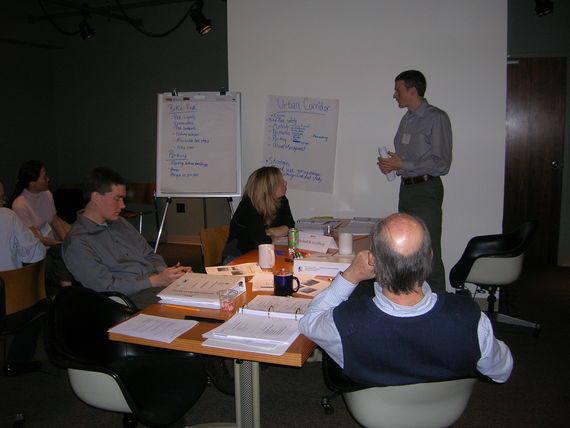
INTEGRATED TRANSPORTATION & LAND USE COURSE
NATIONWIDE
McCormick Taylor delivered this course to help practitioners develop more integrated multimodal transportation systems that balance a community’s land use with the mobility needs of various users.
THE CHALLENGE
The National Highway Institute (NHI), the training arm of the Federal Highway Administration (FHWA), in its effort to provide training to local, state, and federal highway and transportation agencies on new and evolving highway-related technologies, selected McCormick Taylor to respond to training needs in a wide variety of transportation subjects.
This course is designed to help practitioners develop a multimodal transportation system that supports desired land uses and helps them shape land uses to support the transportation system. Course lessons include the principles of transportation and land use; the processes through which transportation and land use issues can be jointly addressed; and implementation steps to ensure that transportation and land use systems are designed in a compatible, mutually supportive manner.


HOW WE HELPED
McCormick Taylor, teaming with adult learning specialists, successfully integrated technical content with effective training techniques to develop a strategy for course development and delivery. Through the NHI contract, we also provided the course delivery to the National Transit Institute program. Transportation and Land Use is a three-day course that is designed to help practitioners develop a multimodal transportation system that supports desired land uses and help shape land uses to support the transportation system.
RESULTS
Upon completion of the course, participants were able to:
- Explain how transportation decisions affect land use, growth patterns, and related community impacts on both regional and local scales.
- Explain how land use patterns affect peoples' travel patterns and the overall performance of the transportation system.
- Describe the various transportation planning processes—including statewide planning, metropolitan planning, corridor planning/alternatives analysis, the NEPA process, subarea planning, and project development—and how land use considerations can be integrated into these processes.
- Describe local comprehensive planning and land use regulatory activities, and how the process and outcomes of these activities can support local and regional transportation objectives.
- Identify the full range of stakeholders—including public agencies, private and nonprofit organizations, and the general public—who should be involved in transportation and land use planning and decisionmaking, and describe methods for involving these stakeholders.
- Describe methods that are available for implementing coordinated transportation and land use strategies.
- Identify analytical tools that are available for measuring and forecasting the impacts of transportation and land use decisions.
